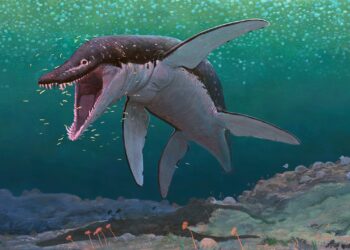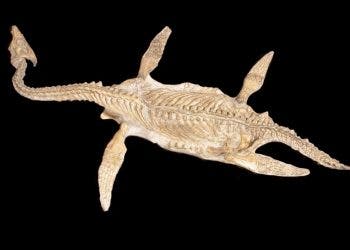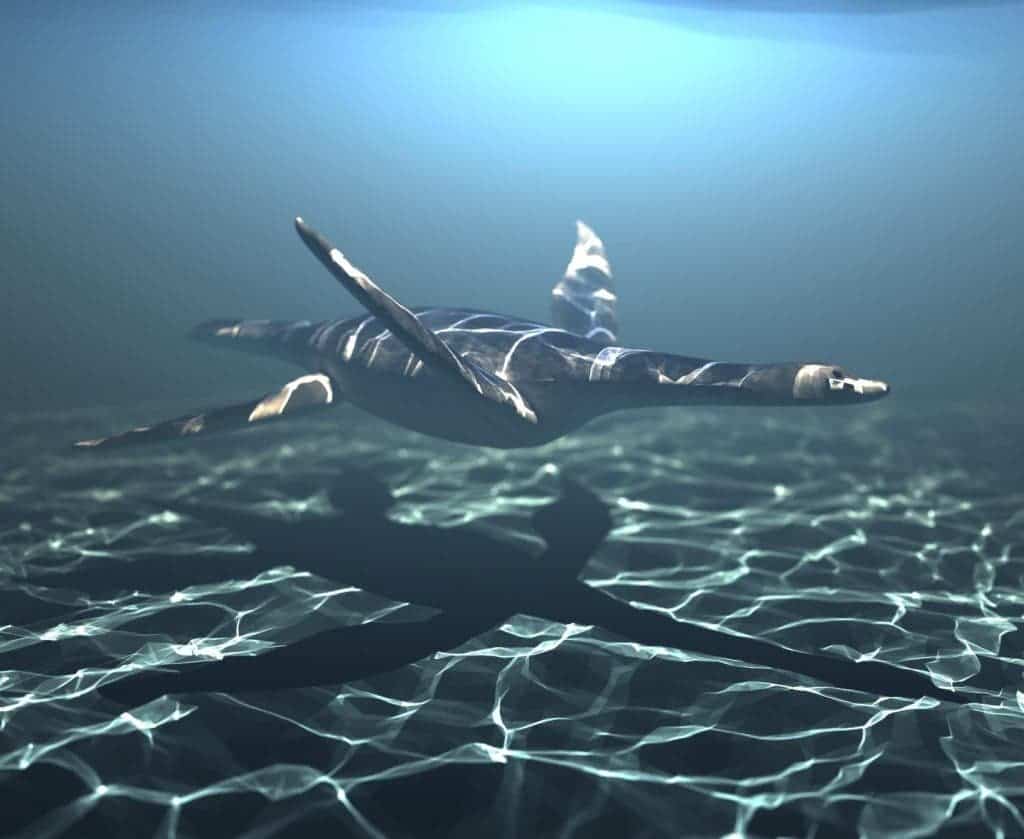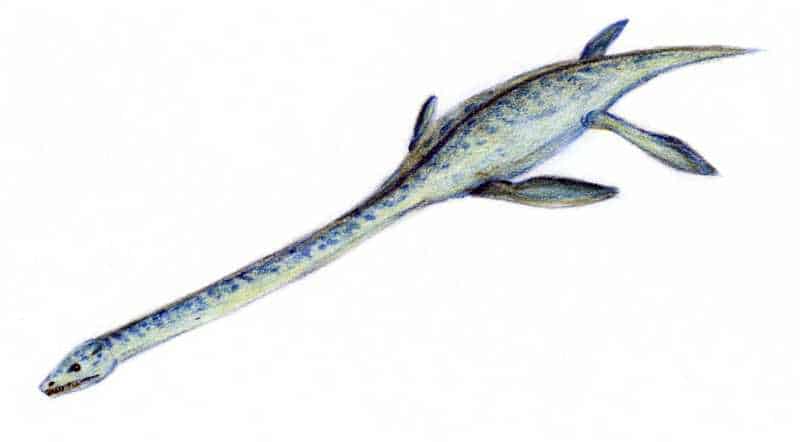We might have to rethink the classic idea of a plesiosaur swimming with a bent neck. Pernille V. Troelsen, a PhD student at Liverpool John Moores University, UK, simulated plesiosaur locomotion with 3D models and found that it would have been much easier for them to swim with a straight neck, and that’s likely how they moved around.
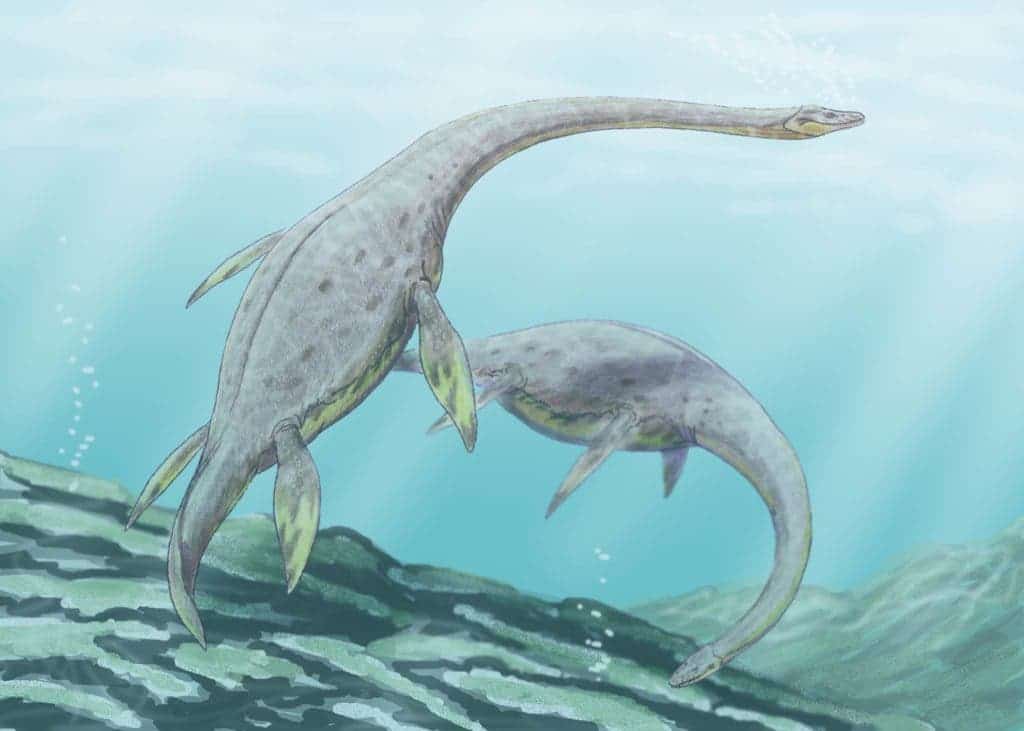
While dinosaurs ruled the land, plesiosaurs ruled the sea — with an iron fist. For almost 140 million years, since the late Triassic (203 million years) and till the end of the Mesozoic (66 million years), plesiosaurs feasted on pretty much everything that was underwater. We know this due to the abundance of fossils paleontologists have found — more than a hundred species have been identified, giving scientists a fairly good understanding of their anatomy. Plesiosaurs had several remarkable physical traits, but without a doubt, the most impressive thing about them is the long neck.
Not all species had long necks. Some of them had big heads and short necks. These were likely apex predators, fast hunters of large prey. But others, and these are the ones we’re looking at here, had small heads and very long necks: up to 7 meters. This extremely long neck provided some advantages, but it might have also been an obstacle for efficient swimming.
“Plesiosaurs with long necks (approximately 2-7 m) would have less movement of the neck compared to short-necked ones (1-2 m). This would mean that different species could feed on different prey, and this corresponds with the diversity seen in long-necked plesiosaurs,” Troelsen told ZME Science.
Because of the huge drag their underwater movements created, these long-necked plesiosaurs were likely static predators, idly waiting for prey to swim by and then snapping at it much like today’s crocodiles. It also didn’t make a lot of sense for them to constantly move around. This strategy helped them save a lot of energy, as moving around must have been quite taxing to them.
“As plesiosaurs had four flippers/limbs they would have made a huge difference in terms of how fast plesiosaurs could swim. Like today’s penguins and turtles they would have “flown” through the water, but as this is quite energy demanding they wouldn’t have swum for hours and hours. So, the distance covered would be short in order to save energy.”
But when they did swim, how did they do it? This is where Troelsen’s new study enters the scene.
Putting your neck on the line

She found that in order to make their bodies more hydrodynamic, the long-necked plesiosaurs kept steady, straight necks while swimming, bending them only while they were moving at slow speeds or when floating. To test the hypothesis, she created a digital 3D model based on a simplified plesiosaur body shape (see above) and used computational fluid dynamics to determine how bending the neck would have affected the hydrodynamic characteristics of the animal. This fills in some significant gaps in our understanding of plesiosaurs and might force us to change some of our ideas about these creatures.
“We have some ideas about why they had long necks and they mainly concern feeding strategies, but we still don’t fully understand how they moved,” explains Troelsen. “These were extremely successful animals that existed for 140 million years, but we don’t have any living equivalents to compare with”.
Not only did the bending itself create additional drag they had to overcome, but the location of the bending was also significant, with some locations adding more drag than others.
So they probably kept their necks straight and rigid, but how fast could have plesiosaurs swam? There’s no clear answer to the question, but this study inches us closer to an accurate result. Understanding the biomechanical relationship between the creature and its natural environment could enable us to better understand its evolutionary trends and behavioral traits.
“Studies have shown an optimal swimming speed for plesiosaurs of about 0.4 m/s (1.44 km/h) to a maximum sustained speed of about 2.5 m/s (9 km/h) (like today’s dolphins), depending on joint movement of the limbs and specific species. However, previous studies have mainly looked at the hydrodynamic effects of the limbs but not included the movement of the neck and its implications for the swimming speed etc. This is where my PhD is important as it will help answer the question of the hydrodynamic implications of the long necked plesiosaurs.” For a comparison, the world record in the 50 m freestyle race was set with an average speed of 8.6 km/hr.
“My findings show that it probably wouldn’t be possible for a plesiosaur to move at 8 km/h with a bend neck because of the pressure on the neck, as when at 3,6 km/h (as was the speed in my study) there are already issues with the pressure when the neck is bent. However, with a static neck it would seem reasonable moving at 8 km/h, though the animal would have to move in a straight line which would restrict hunting possibilities,” Troelsen concluded.
Of course, this is just an initial stage of the models. Troelsen and her colleagues will now work to add more refinements, looking at the fossil record and digitizing vertebra, and then adding them into the 3D models and simulations.
